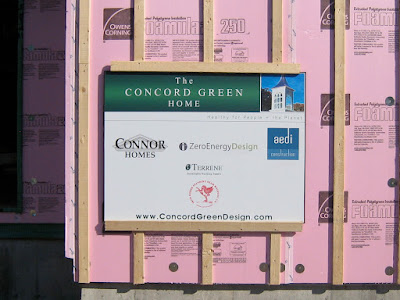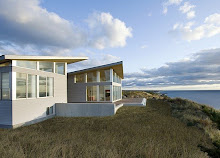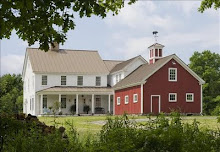
Ocean view from the house
I had been thrilled to find a charming oceanfront cottage that met all of our healthy travel checkboxes - no smoking, no pets, no mold, no feather bedding - all for a special September rate. Finally, this would not be the typical family trip, which usually involved a lodging relocation due to some health trigger. We unpacked our bags, anticipating a relaxing week of pure heaven.
Oh, how wrong I was. The next morning, I awoke feeling like I had a pile of bricks sitting on my chest and it hurt to breathe. Was it the carpet in the master? The cleaning chemicals? It didn't matter. We couldn't stay. By the end of the day, we were lugging our bags into a modern beach house just 2 blocks from the water. Sure, it wasn't oceanfront, but the house was nestled in a stand of beautiful trees, had 2-story high ceilings, polished concrete floors, and a very cool decor throughout. Plus, I thought, it would save our vacation.
Wrong again. That fresh clean scent that permeated the house turned out to be cedar... lovely aromatic raw cedar lining all of the ceilings. (I should mention now that severe cedar allergies helped prompt our move back to the East Coast after three rather sickly years in Austin, TX, the "cedar fever" capital of the U.S.) I scrambled to open as many windows as possible, only to find that all of those beautiful trees were, yes, you guessed it, cedar. My asthma was getting worse by the minute, and now I wasn't the only family member complaining of symptoms.
Most of you are probably reading this and thinking "Wow, you are crazy and obsessive!" Count yourself lucky. But for those of you with allergies, asthma and/or chemical sensitivities, you can probably relate to this traveling tale of woe. You also know all too well the importance of ensuring that environmental triggers are not part of your home.
The biggest challenge in building a healthy house like THE CONCORD GREEN HOME is to ensure that every last building material is neither an allergen nor a toxic trigger. It can be done, but it takes diligence every step of the way to ensure that one miss-step does not negate all of your careful materials selections and planning.
Here are a few helpful resources on your way to a healthier home:


 Love this classic white barn-style garage.
Love this classic white barn-style garage.








































